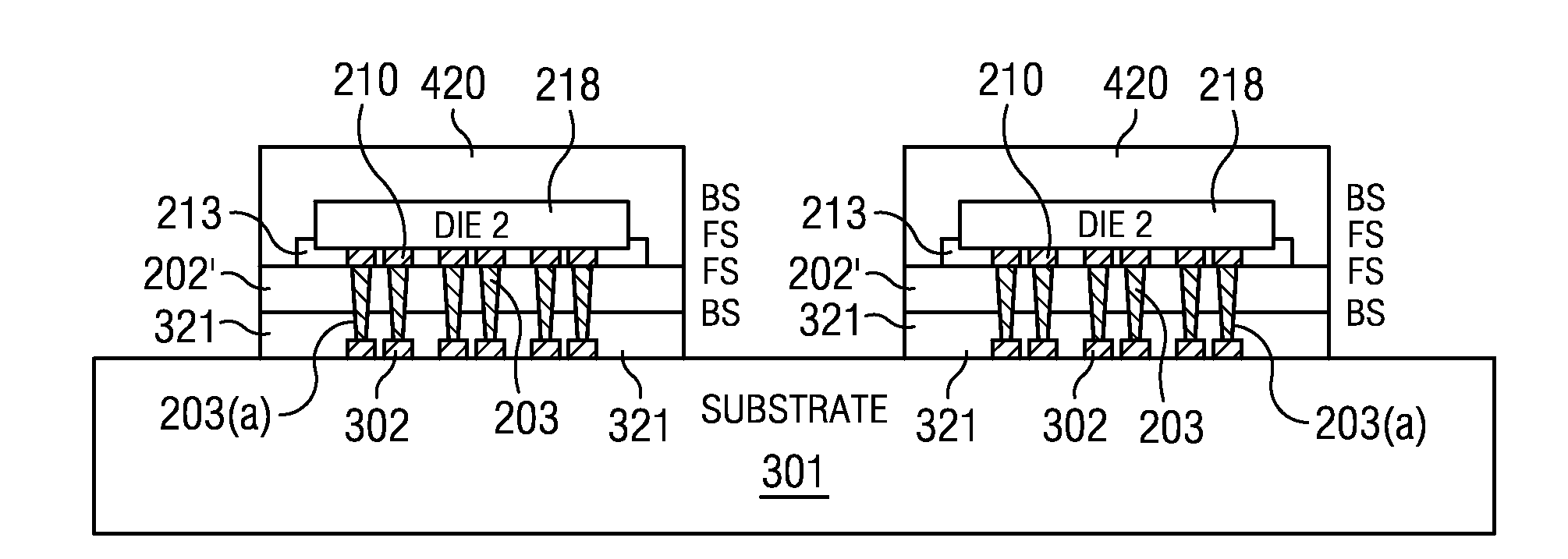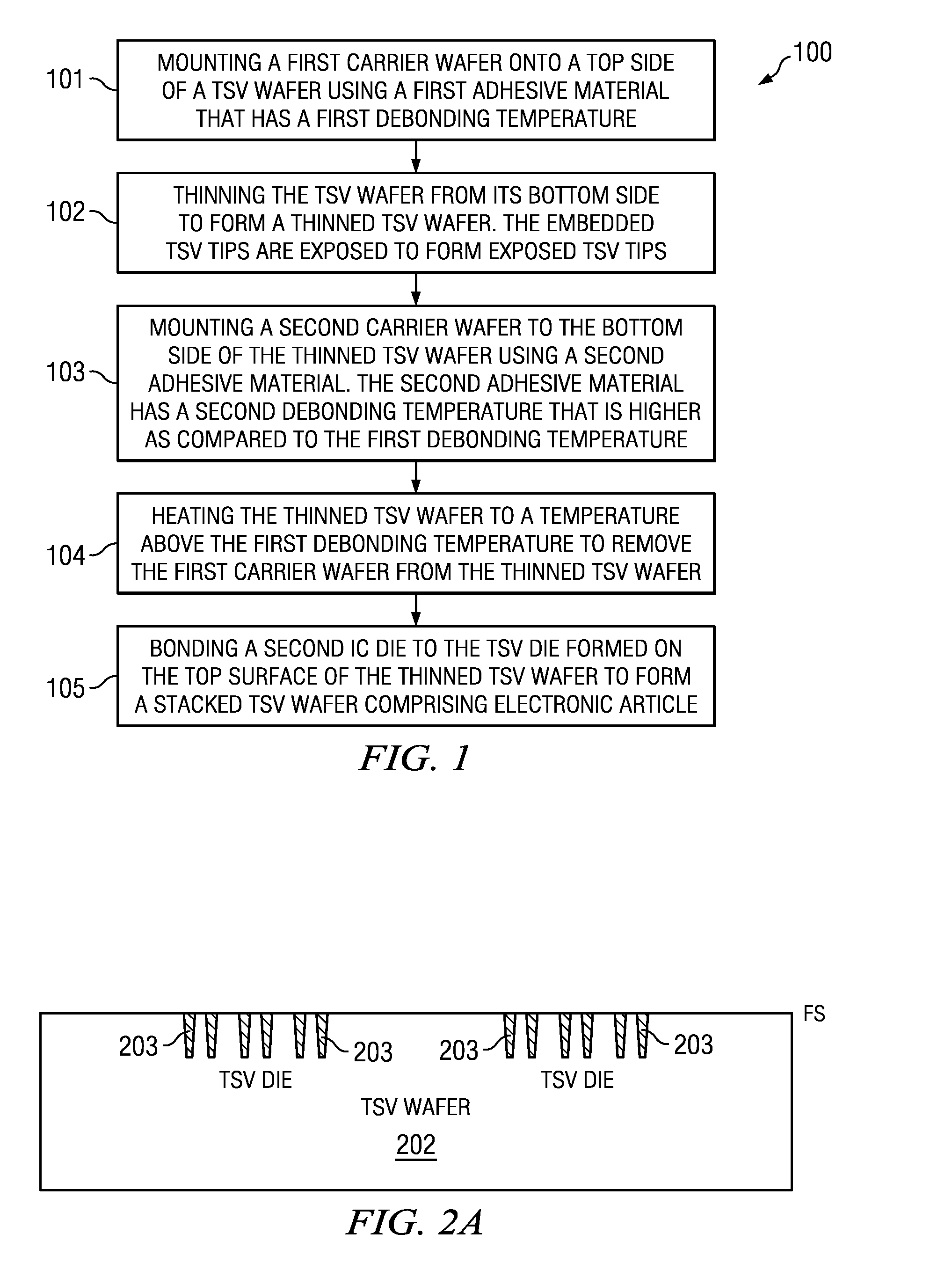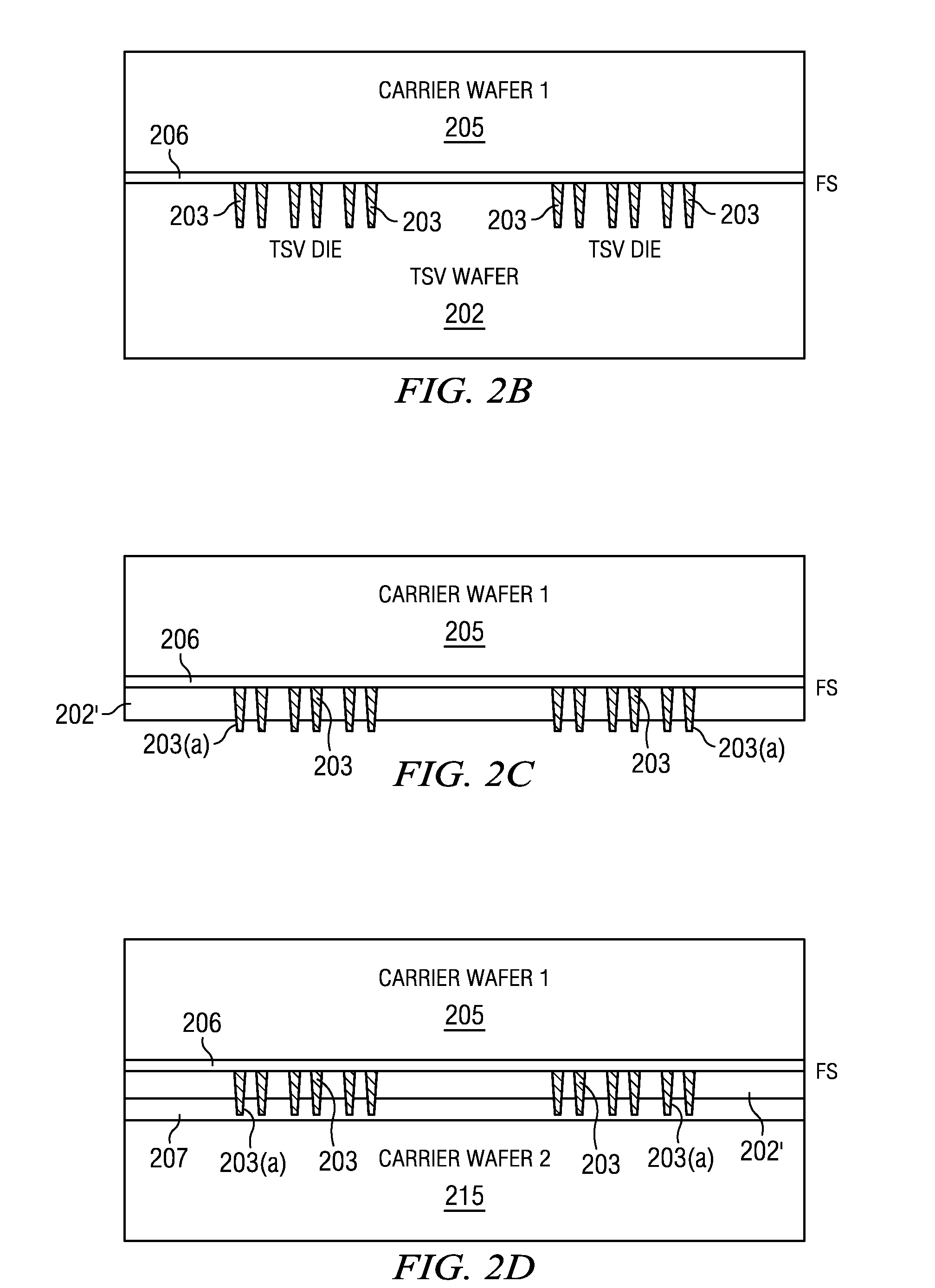Dual carrier for joining IC die or wafers to TSV wafers
a dual carrier and ic die technology, applied in the direction of adhesives, electrical devices, semiconductor devices, etc., can solve the problems of reducing the resistance of the joints, and complicating the jointing/bonding with the ic die. , to achieve the effect of improving the circuit performance and reliability of singulated stacked ic dies, reducing the contact resistance of the joints, and reducing the warpage/bow significantly
- Summary
- Abstract
- Description
- Claims
- Application Information
AI Technical Summary
Benefits of technology
Problems solved by technology
Method used
Image
Examples
examples
[0039]Embodiments of the invention are further illustrated by the following specific Examples, which should not be construed as limiting the scope or content of embodiments of the invention in any way.
[0040]FIG. 5 is a graph of viscosity vs. temperature (° C.) for three different exemplary adhesive materials that can generally be used as the bonding adhesives described herein. Adhesive A can be used for the lower debonding temperature adhesive, and adhesives B or C for the higher debonding temperature adhesive. Softening temperature as used herein refers to the temperature at which the viscosity is the minimum viscosity required to stand against debonding, such at least 200 Pa·S. Curve A is the viscosity curve for the Brewer Science WaferBOND™ HT-10.10 coating manufactured by Brewer Science, Inc., Springfield, Mo. Curves B and C provide other viscosity curves for other materials that provide a higher debonding temp as compared to that shown in Curve A.
[0041]One exemplary higher debo...
PUM
 Login to View More
Login to View More Abstract
Description
Claims
Application Information
 Login to View More
Login to View More - R&D
- Intellectual Property
- Life Sciences
- Materials
- Tech Scout
- Unparalleled Data Quality
- Higher Quality Content
- 60% Fewer Hallucinations
Browse by: Latest US Patents, China's latest patents, Technical Efficacy Thesaurus, Application Domain, Technology Topic, Popular Technical Reports.
© 2025 PatSnap. All rights reserved.Legal|Privacy policy|Modern Slavery Act Transparency Statement|Sitemap|About US| Contact US: help@patsnap.com



